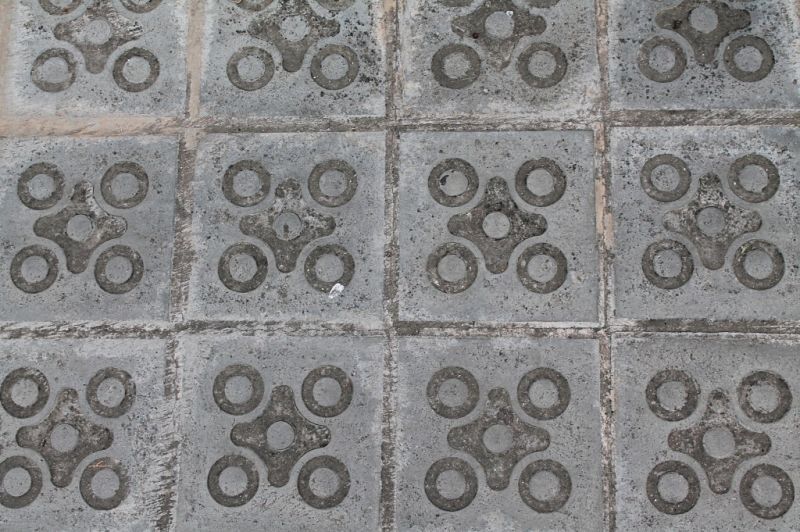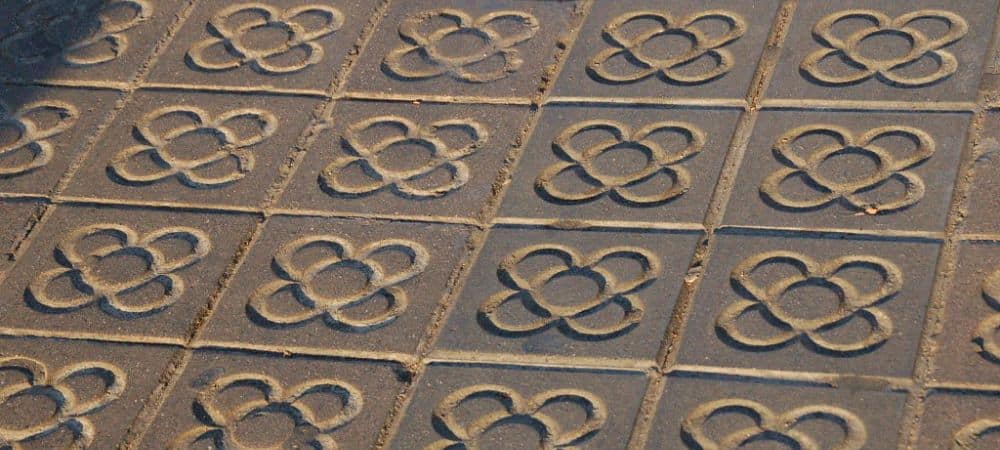The Barcelona rose, the modernist flower or panot de flor in Catalan, has become in recent years one of the symbols of the city of Barcelona.
We meet them under our feet. These concrete flowers are today emblems of the Catalan capital. Some even speak of the luxury of being able to walk on these small slabs of the typical sidewalks of Barcelona, which are particularly present in the Eixample district.
The beginnings of this modernist flower would be found in the Casa Amatller. Designed by architect Josep Puig i Cadafalch, pillar of the Modernist movement, a slab in the shape of a four-petalled flower was used for the first time to pave the entrance to this modernist house, located on Passeig de Gràcia. This building was built between 1898 and 1900. The design is not the one we know today, the flower has undergone a change thereafter.
Slabs at the entrance to Casa Amatller
From the sidewalk to souvenir shops
In the twentieth century, with the expansion of the district of’Eixample, the city has to deal with significant mud slides. The problem is so serious during the rains that some people call Barcelona “the Quagmire”. Each Barcelonan paved the two and a half meters in front of his house with the material provided by the municipality.
To resolve these urban disturbances, the town hall then decides to resort to paving the streets. To do this, she uses concrete slabs of 20 x 20 cm for economic and strength reasons. This type of coating is called panot in Catalan. Other very old slabs have also been found in the districts of Montjuïc and Gòtic.
In the 1900s, five models of slabs were standardized: flower, skull (four circles with a sort of square in the center), four concentrated circles, four squares and four squares with four circles inside. In 1916, the company Escofet y Cia wins a city hall competition to cover the city. It will line many streets with the five forms of panots.

Panot «calavera»
–
The simplistic and pretty style of the slab with the modernist flower makes its success. It stands out from the others and even becomes a symbol of the modernist route, since it is located around the main buildings of this style to visit. So much so that many souvenirs today represent the flower of Barcelona. And for the more fanatical, some commercial sites sell these small tiles.
–


